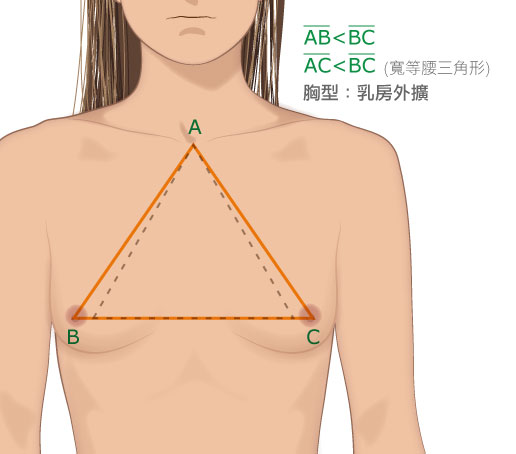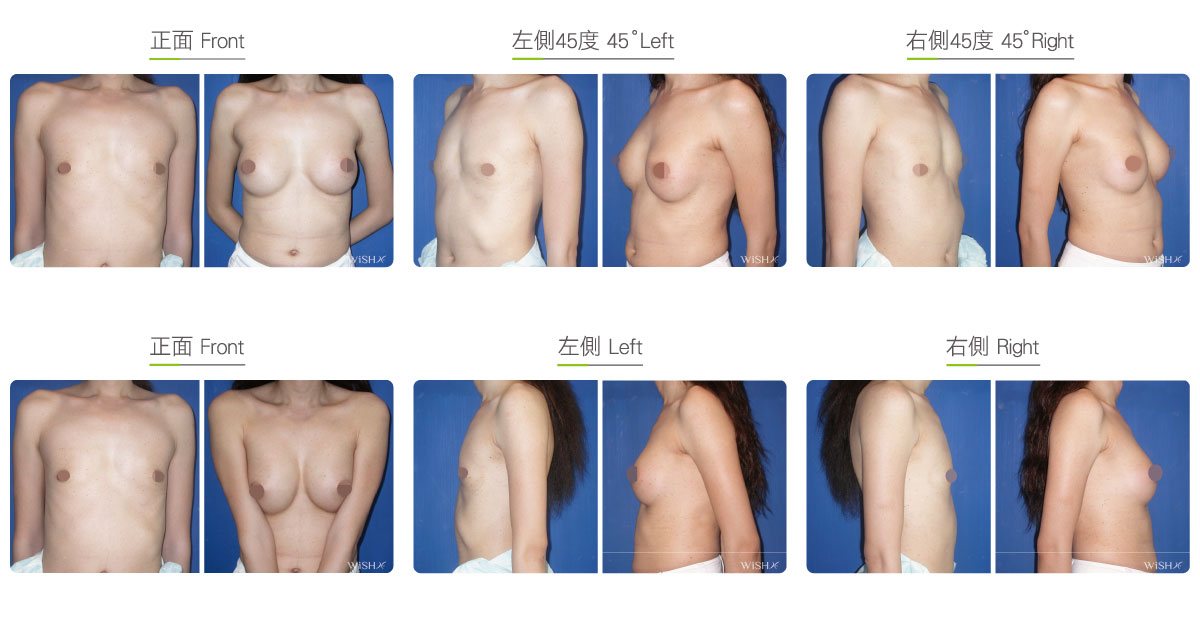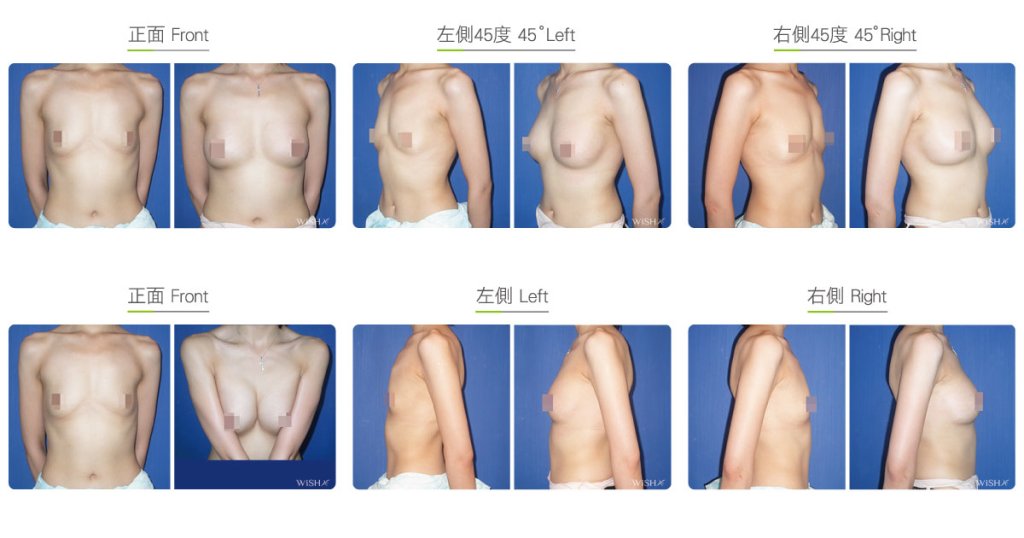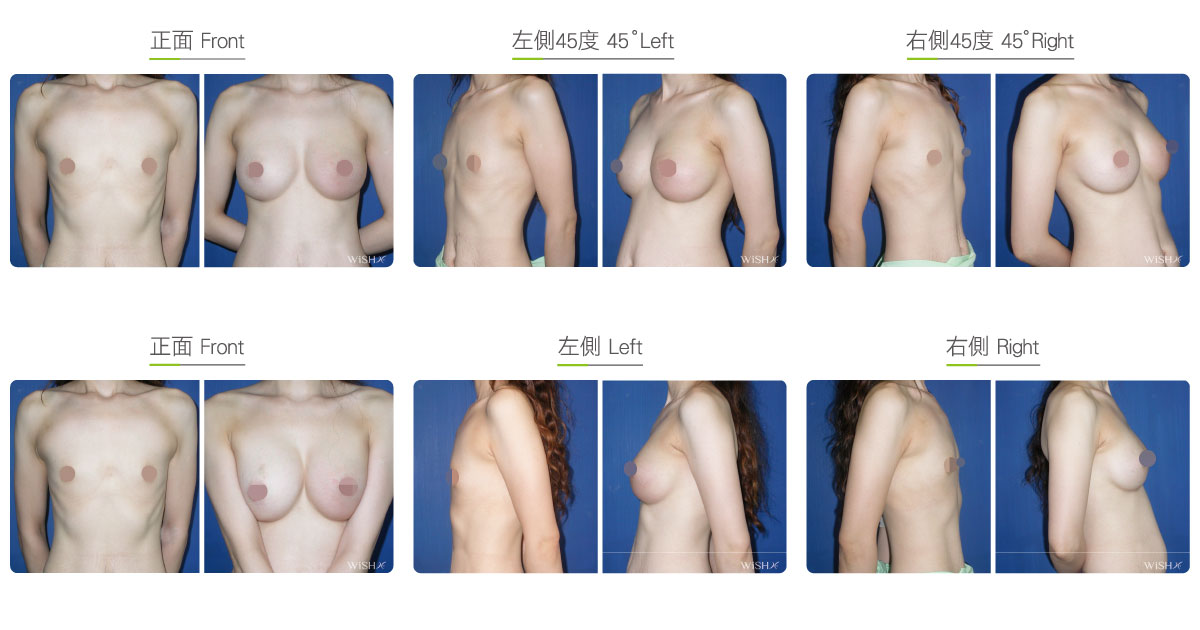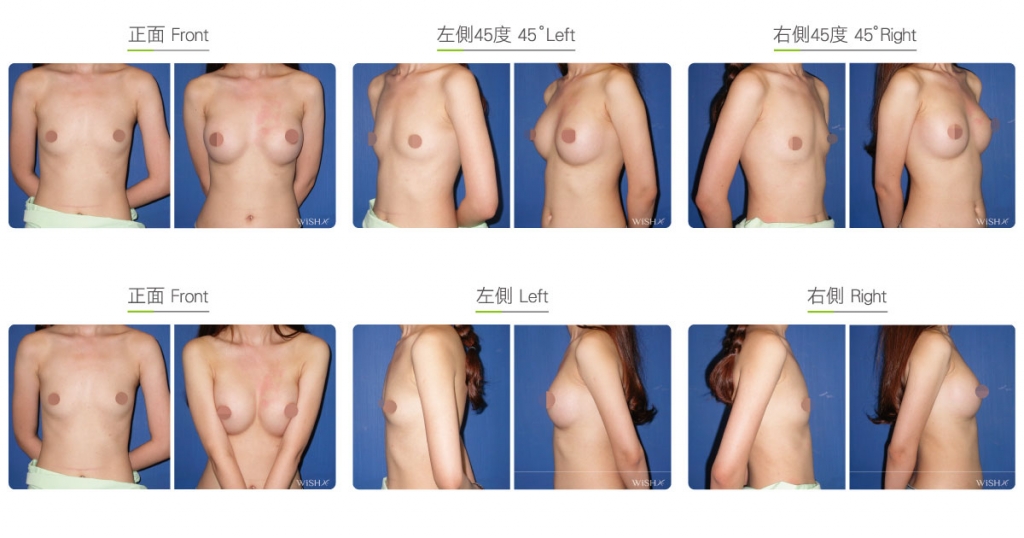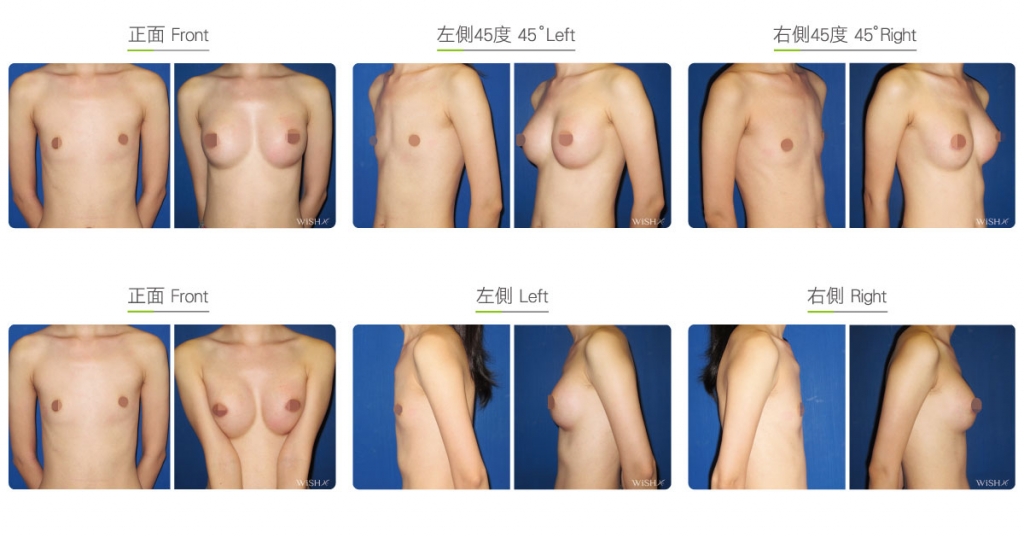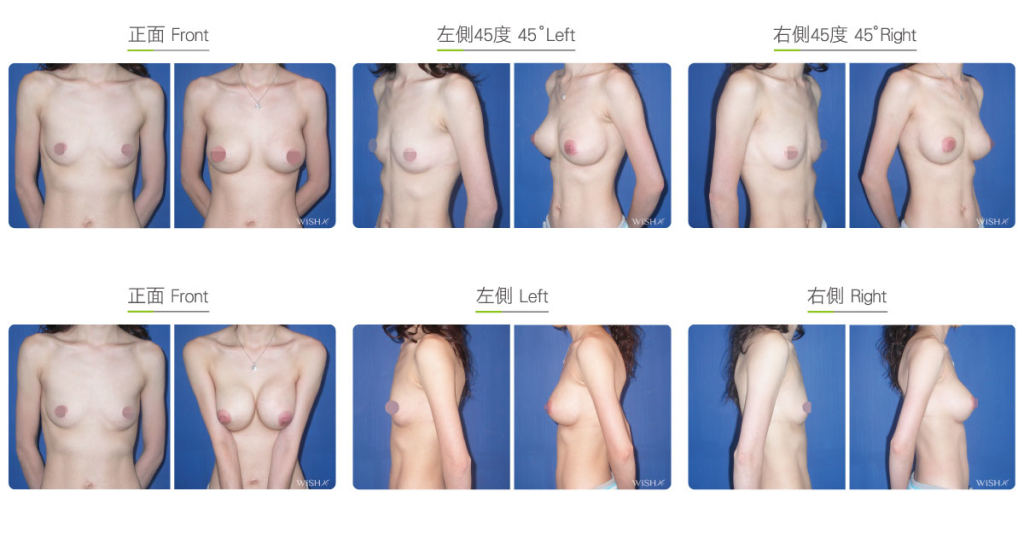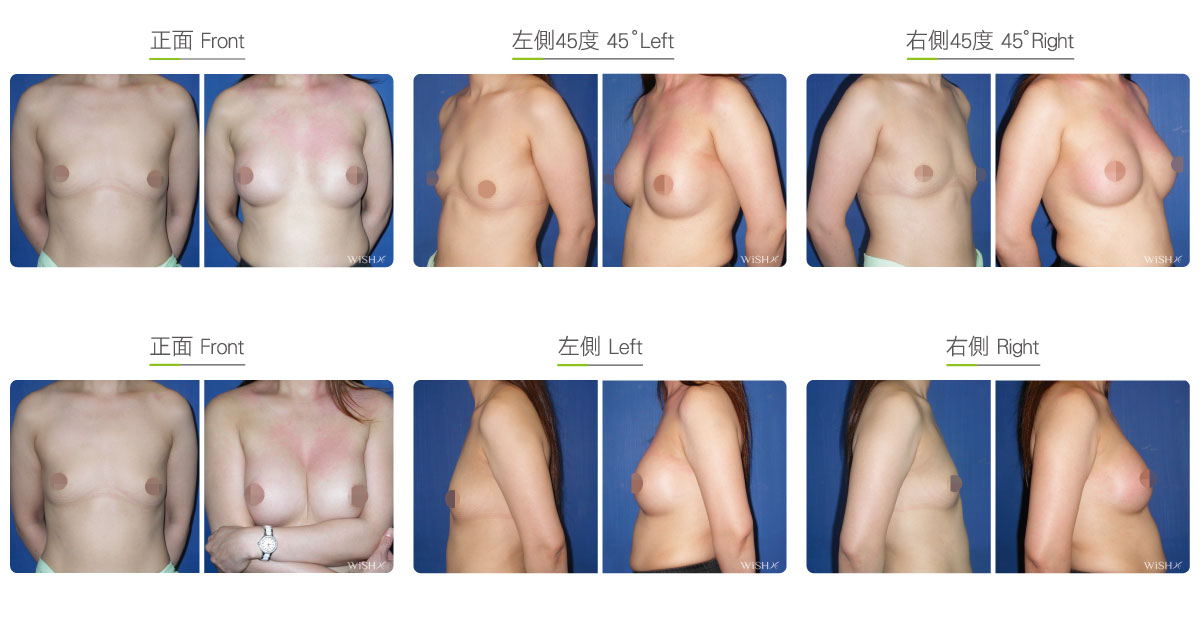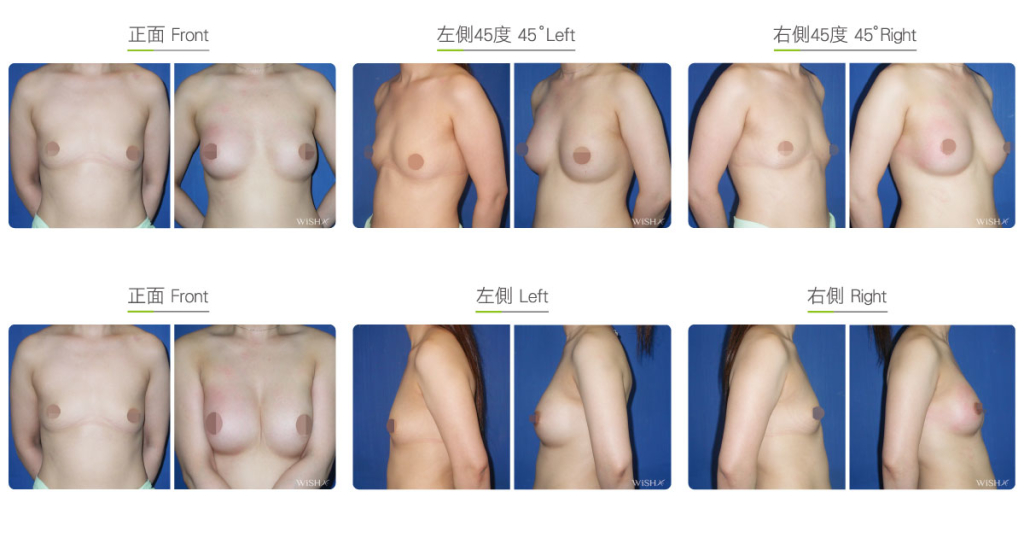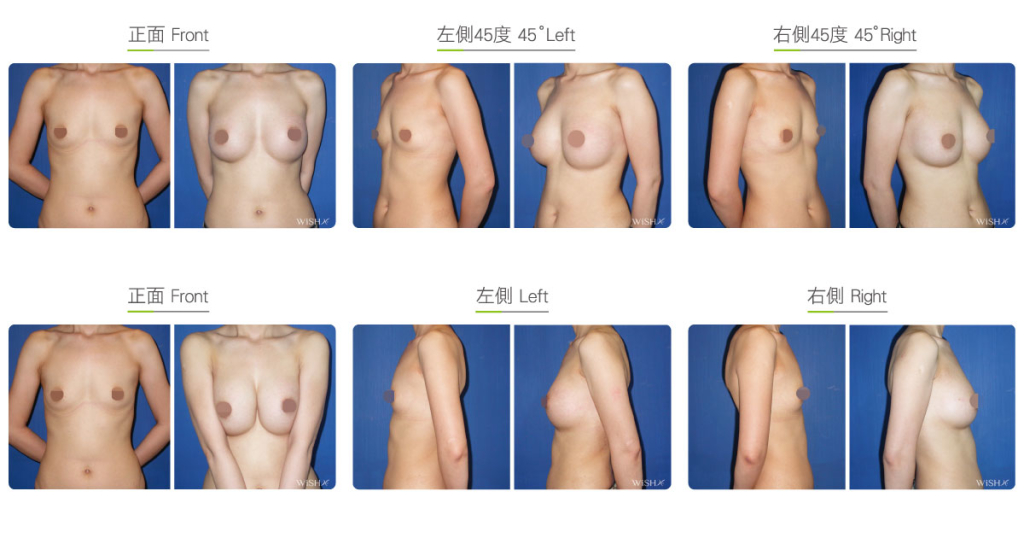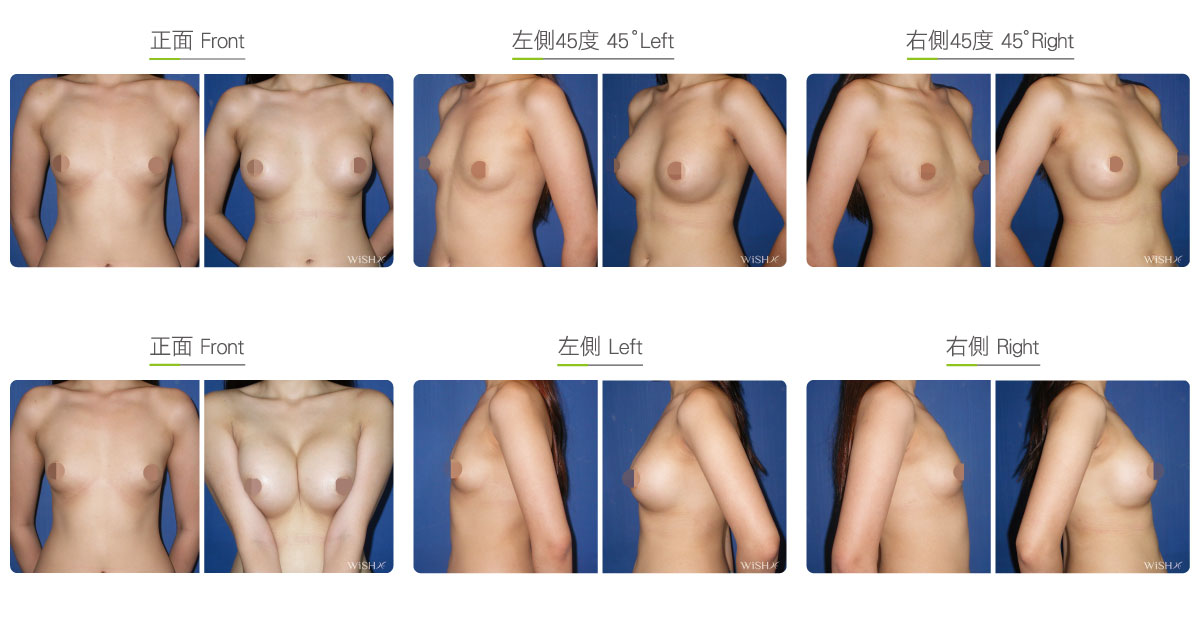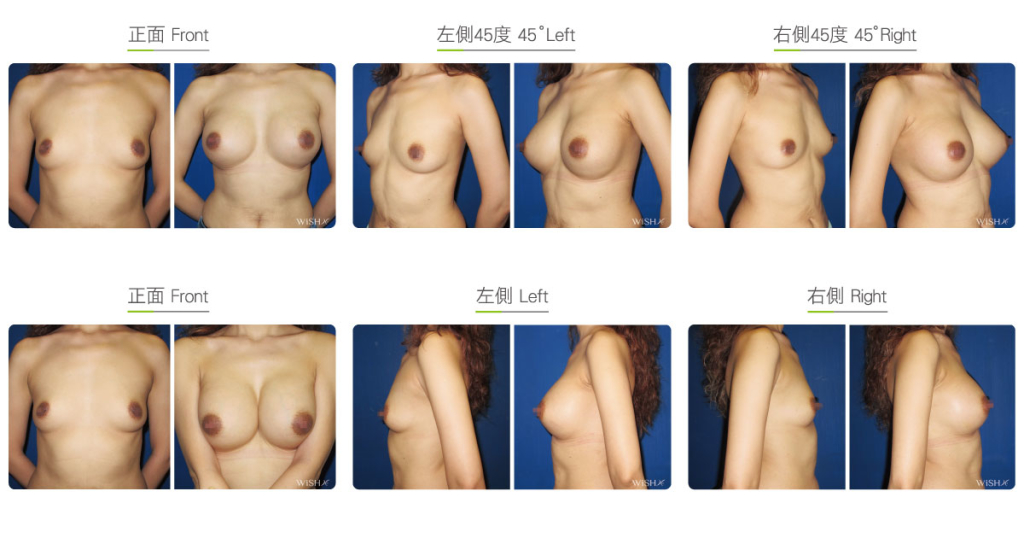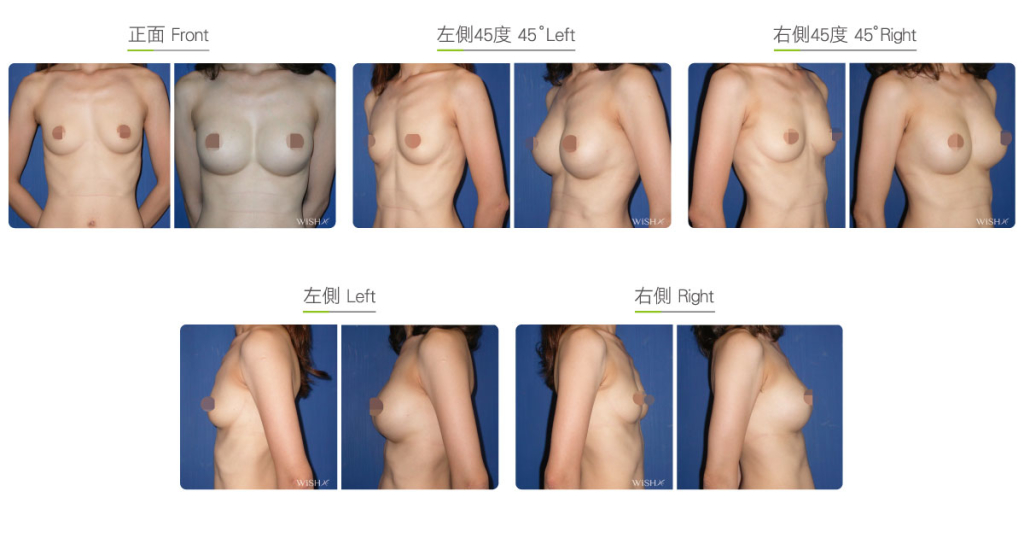Pectus Carinatum (Pigeon Chest)
Patients with pectus carinatum are characterized by a protruded sternum that is like a pigeon’s chest. It is a type of congenital sternal deformity.
Patients have the following characteristics:
- Abnormally splayed breasts and nipples
- Thin and tight chest skin
- Obvious protrusion of the sternum and ribs in the center of the chest (bone process)
front image of a splayed breast
Patients with pectus carinatum have abnormally tight chest skin because of a protruding sternum. Therefore, skin thickness and elasticity should be considered when choosing between submuscular and subfascial placement. A single procedure is not suitable for all patients. The following are special considerations in the technique of breast implants:
- The size and diameter of implants should be larger than that in usual procedures to overcome problems such as more apparent breast splay or more distant nipples.
- The medial pocket should be made as close to the midline as possible to create a concentrated and fuller visual effect and achieve the goal of fixing the protruding sternum.
- Silicone implants should be used to avoid rippling or wrinkling near the midline.
Surgical conditions
Duration
0.5hr
- Type of anesthesia: General anesthesia
- Type of incision: Transaxillary or periareolar incision
- Recovery: Within 3 days
- Removal of stitches: 7–10 days
General instructions
No food and water on the day of surgery
0hr
- Frequent stretching should be performed for 1 month postoperatively to prevent axillary scar adhesion.
- Tasks and exercises that require excessive arm strength should be avoided, and underwired or push-up bras should not be worn for 3 months postoperatively.
- Smoking and consumption of collagen or vitamin C should be avoided for 3 months postoperatively to prevent the formation of capsules.
- Consistent and regular breast massage should be performed for 6 months postoperatively to maintain breast shape and softness.
Possible complications
- Capsular contracture
- Splayed breasts
- Less concentrated cleavage
- Scar adhesion (underarms)
- Implant edges or wrinkles noticeable on touch
- Insensitive or oversensitive nipples (temporary)
- Implant leakage or rupture
Surgical advantages
-
Implants can hide the protrusion of the sternum and ribs and restore the normal appearance of the breasts.
-
The procedure can both increase breast size and correct sternal deformities.
-
The procedure can fix splayed breasts or nipples.
Surgical drawbacks
-
Implant size should be increased depending on the severity of pectus carinatum, thus limiting the flexibility of breast sizes.
-
Implant edges or wrinkles might be palpable in those with thin chest skin.
-
Splayed breasts may not be completely corrected.
-
Improper postoperative massage could result in less centered breasts and cleavage.
Possible procedures in conjunction
Before & After
These photographs represent typical results, but not everyone who undergoes plastic surgery will achieve the same.

